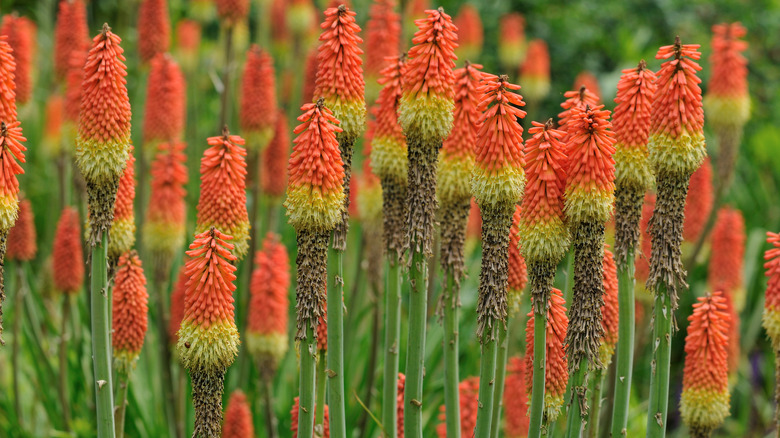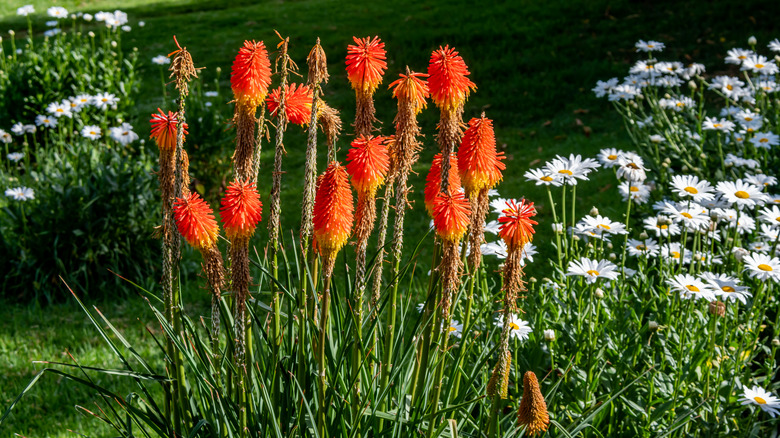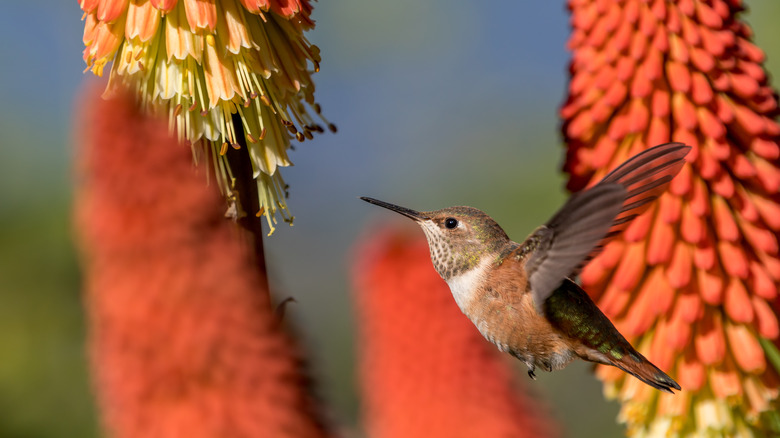Important Things To Know Before Planting Red Hot Pokers In Your Yard
People start gardens for different reasons such as the desire to grow their food, wanting more greenery around the house, or improving the landscape. If your reason for wanting a garden is to pack it with all sorts of exotic-looking plants and wow your neighbors, then you have to make a little room for some red hot pokers (Kniphofia spp.). These plants are eye-catching with their bushy leaves and signature flowers that resemble hot iron pokers with long stems and fiery red tips. This stunning plant isn't as common as other flowers, so before you go planting it, there are some important personality traits the poker has that you have to know and consider.
Liking a flower enough to want to introduce it into your home garden isn't enough reason to do so. You have to vet it to make sure it's a commitment you can maintain. For the red hot poker, this translates to knowing its longevity in the yard, the kinds of animals it attracts, maintenance procedures, whether or not they disperse seeds, and how big they get.
The red hot poker is ideal for people with large gardens, particularly if you need border plants. The foliage at the base of the plant measures 3 to 5 feet long while the flower can reach an impressive height of about 6 feet. Hedging your landscape with these would be a sight to see, but if you're not in the market for tall, overwhelmingly visible plants, then these aren't for you.
Red hot pokers are drought-resistant and low maintenance
Red hot pokers are succulent plants native to parts of Africa. This means that they are drought-tolerant and can go without being watered for long periods — a godsend for people who prefer low-maintenance plants. These fiery plants are also heat-tolerant and grow well in the hardy zones 5 to 9. However, the pokers love moisture when they are newly planted. Once they turn into veterans in your yard, you can water them less often. Let the topsoil dry about two inches deep before watering again. Because red hot pokers are susceptible to root rot, you have to plant them in well-drained soil and avoid excess hydration.
Red hot pokers are hands-off plants that you don't have to worry too much about. You should always deadhead them so that they can flower again. This goes for any dead or damaged leaves as well. Prune them off once the cold goes away throughout early to the middle of springtime to give new leaves a chance to grow in without being bombarded by the harsh winter cold.
Red hot pokers usually bloom from late spring into early fall depending on the species you settle for. If you take proper care of them, red hot pokers will last you a good number of years because they are perennials. If you're looking for a one-season plant, then this isn't for you. Those brilliant flowers will keep coming back year after year to light up your garden.
Red hot pokers are ideal for large gardens that need pollinating agents
If you have a large garden with other flowers or fruit that require pollination to propagate, then adding red hot pokers to it will be a huge bonus. When the red hot flowers bloom, they draw hummingbirds to your yard because of the nectar that they produce. In addition to birds, they also attract bees to your garden. This is great news if you have fruit trees and veggies in the area. While the red hot poker is busy ensuring the other plants in your garden get pollinated, it also keeps predatory animals away. They are deer and rabbit-resistant — another plus.
Red hot pokers make a great addition to your garden, but they can spread like wildfire. The seeds are dispersed by wind and the plants are also capable of producing new plants by rhizomatic division. This means that they create new shoots and roots underground from their stem. Red hot pokers are very aggressive plants and are even tagged as invasive plants in California and Oregon. If you can deal with an aggressive grower, then taking on the poker might be right up your alley.


